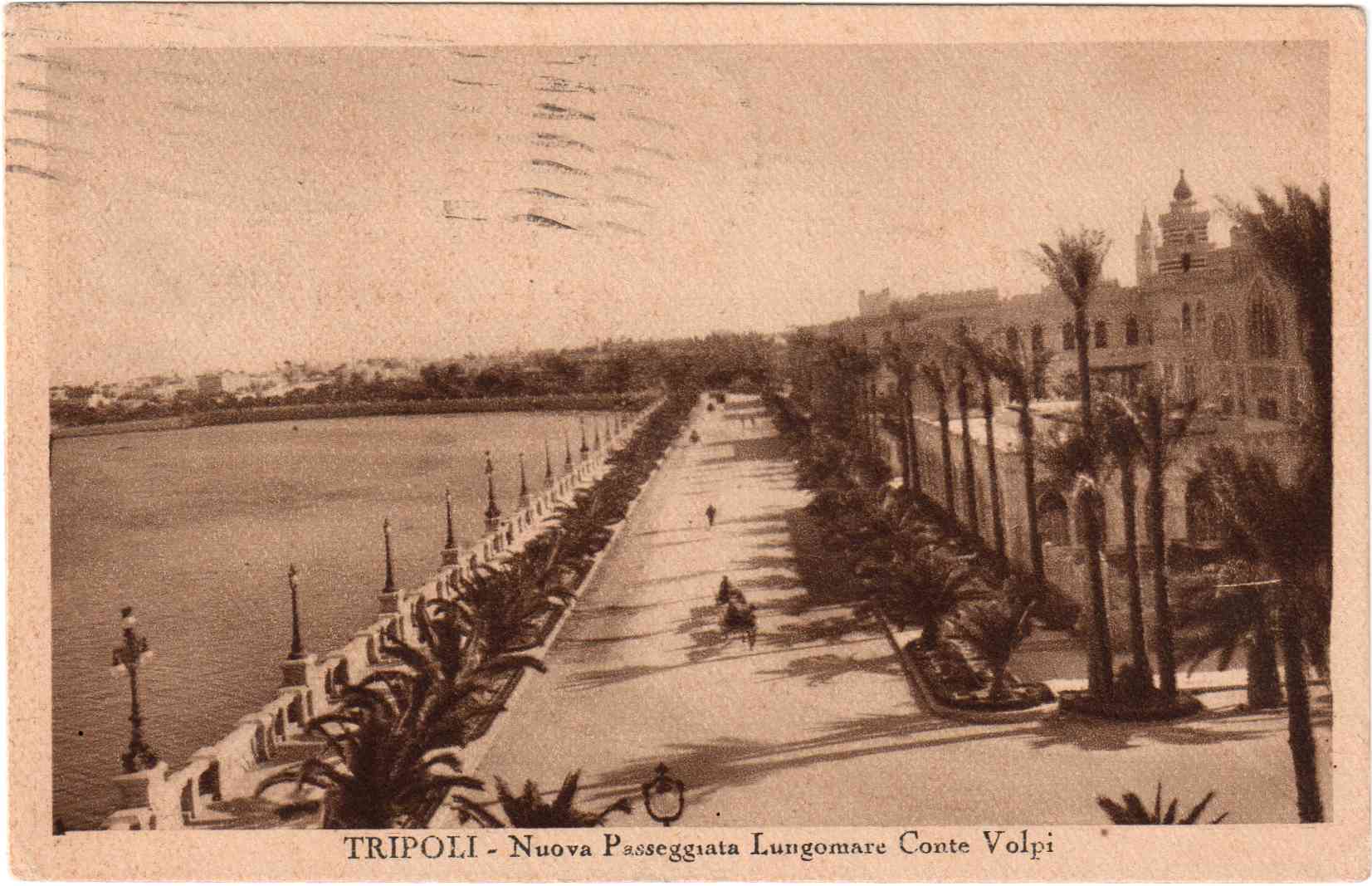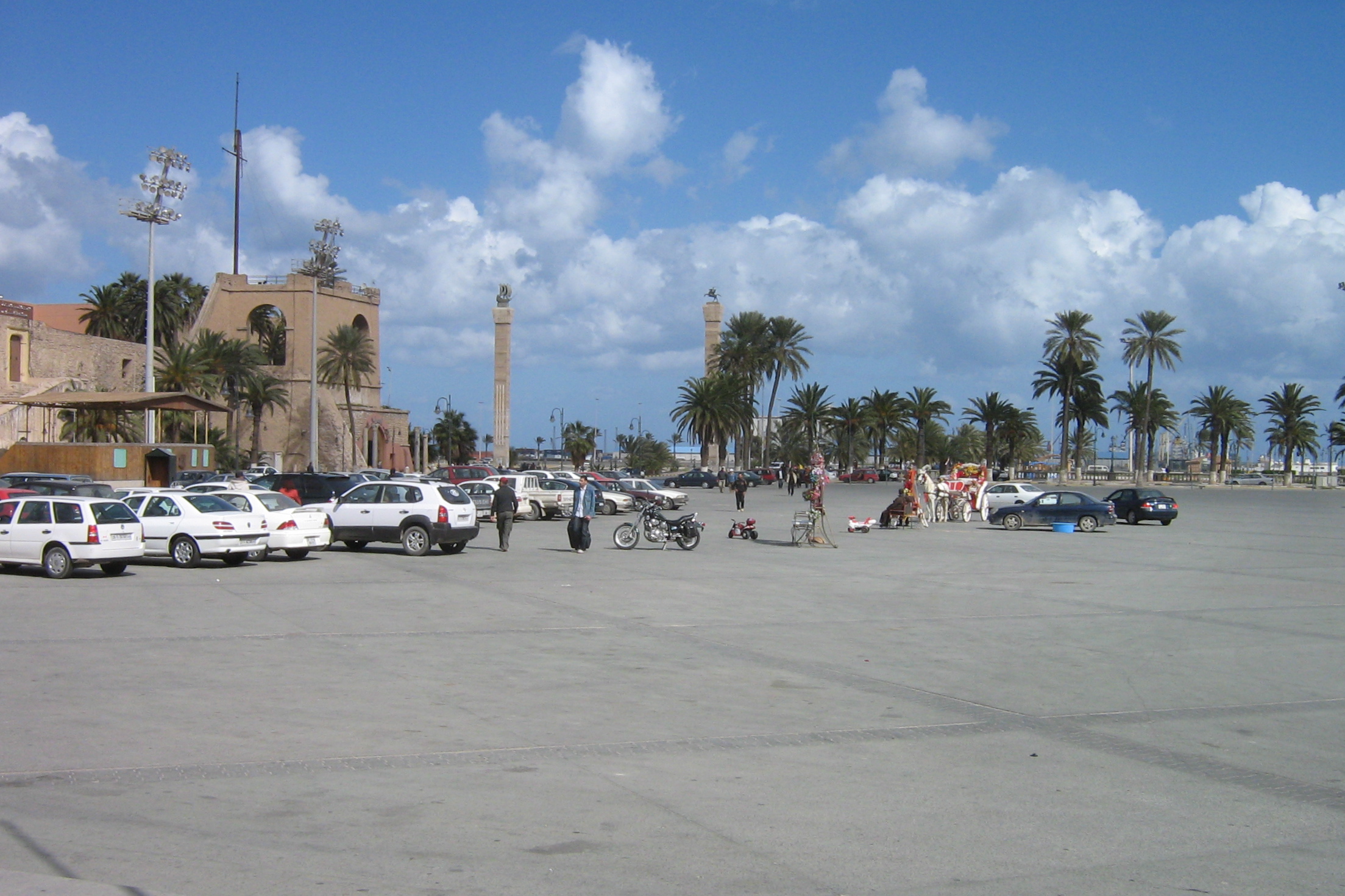Green Square, Tripoli on:
[Wikipedia]
[Google]
[Amazon]
The Martyrs' Square ( ar, ميدان الشهداء '); known as Green Yard ( ') under the

 The square was originally constructed by the Italian colonial rulers on the site of the old bread market (''sūq al-khubs''), and it was expanded on several occasions during the 1930s.
During the Italian colonial period, it was called ''Piazza Italia'' ("Italy Square"). After Libyan independence in 1951, it was known as "Independence Square" during the Libyan monarchy (1951–1969). After the 1969 revolution by Gaddafi, the square was renamed again to "Green Square" to mark his
The square was originally constructed by the Italian colonial rulers on the site of the old bread market (''sūq al-khubs''), and it was expanded on several occasions during the 1930s.
During the Italian colonial period, it was called ''Piazza Italia'' ("Italy Square"). After Libyan independence in 1951, it was known as "Independence Square" during the Libyan monarchy (1951–1969). After the 1969 revolution by Gaddafi, the square was renamed again to "Green Square" to mark his
Gaddafi government
Muammar Gaddafi became the ''de facto'' leader of Libya on 1 September 1969 after leading a group of young Libyan Army officers against King Idris I in a bloodless coup d'état. After the king had fled the country, the Revolutionary Comma ...
; Independence Square ( ') during the monarchy
A monarchy is a government#Forms, form of government in which a person, the monarch, is head of state for life or until abdication. The legitimacy (political)#monarchy, political legitimacy and authority of the monarch may vary from restric ...
; and originally (during Italian colonial rule) known as ''Piazza Italia'' ("Italy Square") is a downtown landmark at the bay in the city of Tripoli, Libya
Tripoli (; ar, طرابلس الغرب, translit= Ṭarābulus al-Gharb , translation=Western Tripoli) is the capital city, capital and largest city of Libya, with a population of about 1.1 million people in 2019. It is located in the northwe ...
. The main commercial center of the city surrounds the square. The Square is also a main tourist attraction in Tripoli. It has a large legendary fountain done by an Italian architect at the centre of the square. The square is the meeting point of many different avenues. Omar Mukhtar Avenue is one of the longest in North Africa, it was built by Italians in the colonial time, and Libyans during the era of King Idris I
Idris (I) ibn Abd Allah ( ar, إدريس بن عبد الله, translit=Idrīs ibn ʿAbd Allāh), also known as Idris the Elder ( ar, إدريس الأكبر, translit=Idrīs al-Akbar), (d. 791) was an Arab Hasanid Sharif and the founder of the ...
. Independence Street branches from the square too, and it leads to the Palace of King Idris I. 24 December Avenue is also an Italian built avenue. Mizran Street is the last street that branches from the Martyrs' Square.
History

 The square was originally constructed by the Italian colonial rulers on the site of the old bread market (''sūq al-khubs''), and it was expanded on several occasions during the 1930s.
During the Italian colonial period, it was called ''Piazza Italia'' ("Italy Square"). After Libyan independence in 1951, it was known as "Independence Square" during the Libyan monarchy (1951–1969). After the 1969 revolution by Gaddafi, the square was renamed again to "Green Square" to mark his
The square was originally constructed by the Italian colonial rulers on the site of the old bread market (''sūq al-khubs''), and it was expanded on several occasions during the 1930s.
During the Italian colonial period, it was called ''Piazza Italia'' ("Italy Square"). After Libyan independence in 1951, it was known as "Independence Square" during the Libyan monarchy (1951–1969). After the 1969 revolution by Gaddafi, the square was renamed again to "Green Square" to mark his political philosophy
Political philosophy or political theory is the philosophical study of government, addressing questions about the nature, scope, and legitimacy of public agents and institutions and the relationships between them. Its topics include politics, ...
in his '' Green Book''.
2011 Libyan civil war
On the night of 21–22 August, Libyan rebel groups took control of the area during the 2011 Battle of Tripoli and started referring to it as Martyrs' Square to dissociate the square from theGaddafi government
Muammar Gaddafi became the ''de facto'' leader of Libya on 1 September 1969 after leading a group of young Libyan Army officers against King Idris I in a bloodless coup d'état. After the king had fled the country, the Revolutionary Comma ...
and to commemorate those who died in the fight against his government. On Eid ul-Fitr (31 August) and again on 2 September, tens of thousands of Tripoli residents, including many women and children, gathered on Martyrs' Square to celebrate the end of Gaddafi's rule.
Facilities
It features the Red Castle (''As-Serai al-Hamra''), which hosts Libya's Antiquities Department and the National Museum with a collection of Phoenician, Greek and Roman artefacts. The museum also exhibits a statue of Venus from theHadrianic
Hadrian (; la, Caesar Trâiānus Hadriānus ; 24 January 76 – 10 July 138) was Roman emperor from 117 to 138. He was born in Italica (close to modern Santiponce in Spain), a Roman ''municipium'' founded by Italic settlers in Hispania B ...
Baths at Leptis, a complete Libyan-Roman tomb from the Ghirza region, and a colourful Volkswagen Beetle
The Volkswagen Beetle—officially the Volkswagen Type 1, informally in German (meaning "beetle"), in parts of the English-speaking world the Bug, and known by many other nicknames in other languages—is a two-door, rear-engine economy car, ...
used by Colonel Gaddafi leading up to the revolution. On the other side, a wide avenue leading towards the seafront with two tall pillars. On top of the pillars are an iron-cast, miniature wooden ship; the other one features a horseback rider.
The Royal Miramare Theatre
The Royal Miramare Theatre was a theatre located at Martyrs' Square (formerly Green Square) built in 1925 in Tripoli, Libya. It was located next to the Red Castle. In the 1950s, the theatre was the centre of theatrical activity in Libya. It w ...
used to be located across from the Red Castle, but it was demolished by Gaddafi's government after the 1960s to create space for large demonstrations.
See also
References
External links
* {{2011 Libyan civil war, state=uncollapsed National squares Squares in Libya Tripoli First Libyan Civil War